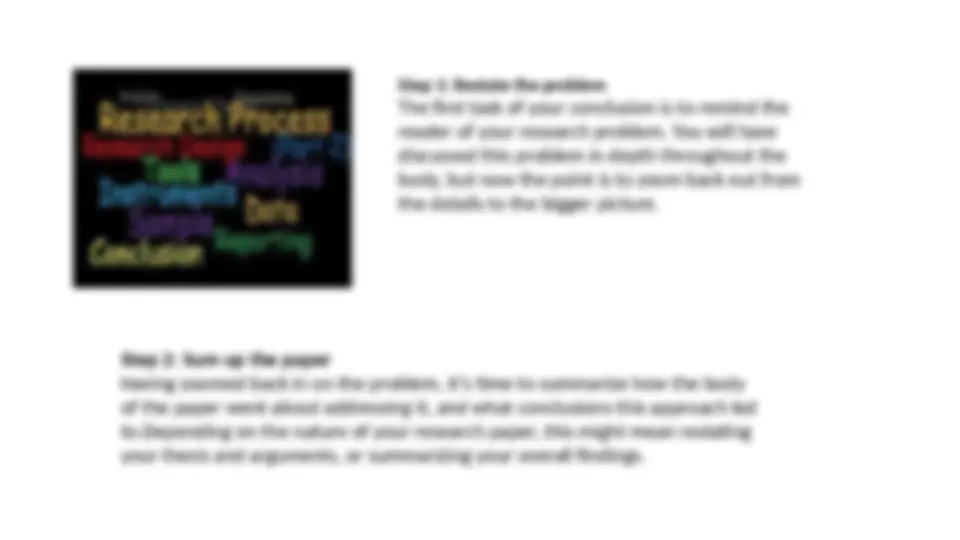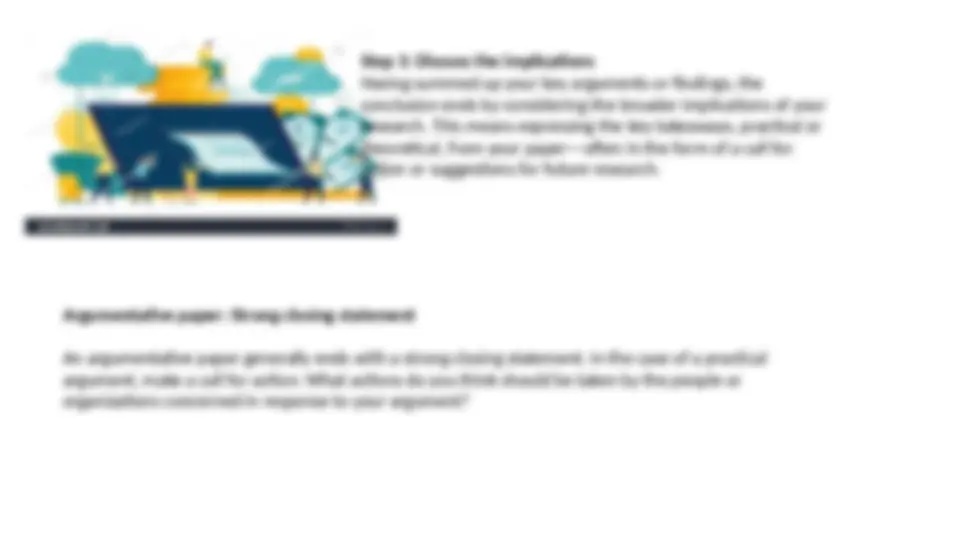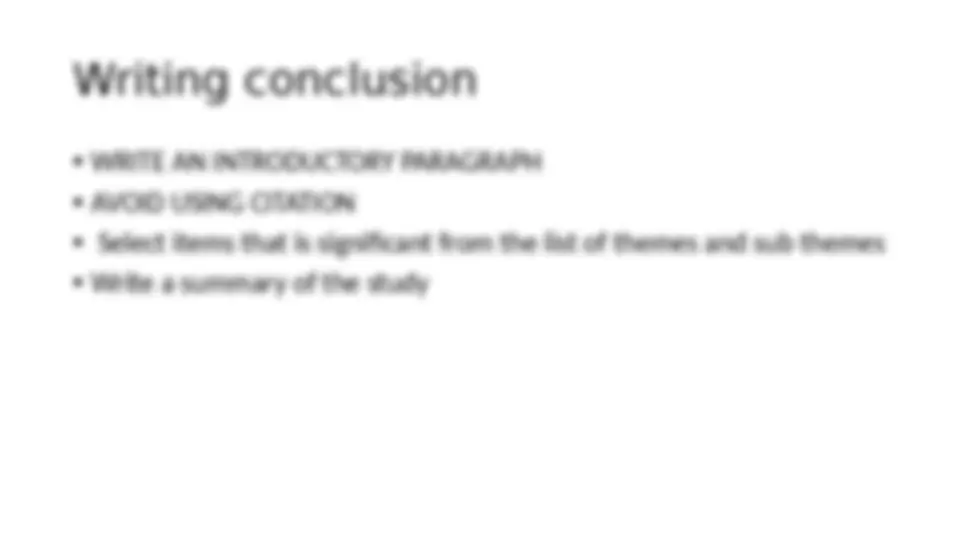






Study with the several resources on Docsity

Earn points by helping other students or get them with a premium plan


Prepare for your exams
Study with the several resources on Docsity

Earn points to download
Earn points by helping other students or get them with a premium plan
Community
Ask the community for help and clear up your study doubts
Discover the best universities in your country according to Docsity users
Free resources
Download our free guides on studying techniques, anxiety management strategies, and thesis advice from Docsity tutors
Guidelines on writing a research paper conclusion, emphasizing the importance of restating the research problem, summarizing arguments or findings, and discussing implications. It also includes examples for argumentative and quantitative research.
Typology: Study Guides, Projects, Research
1 / 8

This page cannot be seen from the preview
Don't miss anything!





How to write a research paper conclusion The conclusion of a research paper is where you wrap up your ideas and leave the reader with a strong final impression. It has several key goals:
**- Restate the research problem addressed in the paper
Step 3: Discuss the implications Having summed up your key arguments or findings, the conclusion ends by considering the broader implications of your research. This means expressing the key takeaways, practical or theoretical, from your paper—often in the form of a call for action or suggestions for future research. Argumentative paper: Strong closing statement An argumentative paper generally ends with a strong closing statement. In the case of a practical argument, make a call for action: What actions do you think should be taken by the people or organizations concerned in response to your argument?